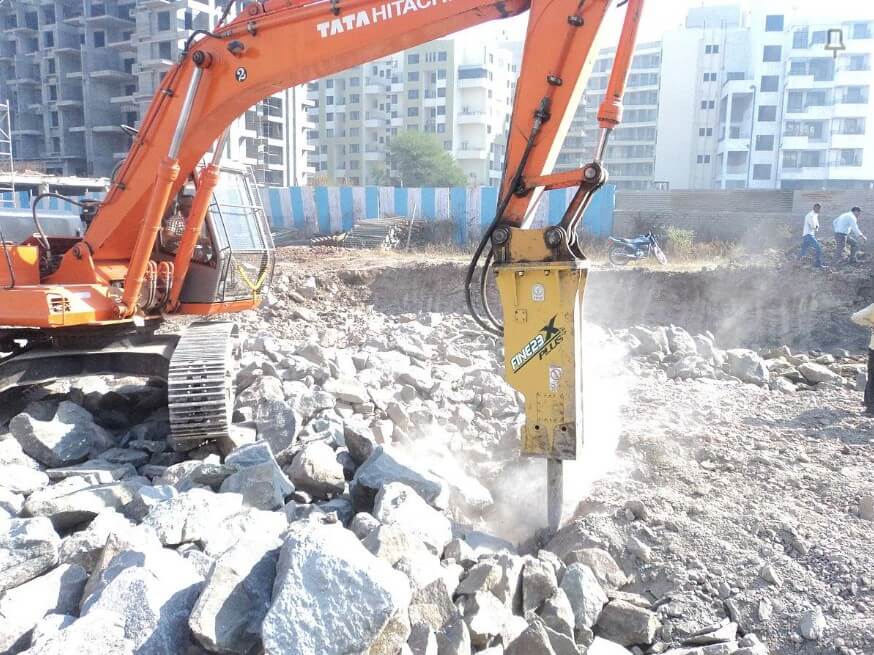Proper Attachments Can Help a Contractor Maximize Efficiency & Profitability
April 23, 2018
5 Common Accessories Used with Hydraulic Hammers
July 23, 2019
All pieces of machinery and equipment are valuable investments in the capability of your business. If you do a lot of resurfacing or heavy-duty digging, a hydraulic breaker may be one of those pieces of equipment. Breaking through tough surfaces like concrete and asphalt can take a toll. Keep your hydraulic breaker running optimally by using the following tips.
Take a look
Get familiar with all of the parts and connections of the breaker and inspect it regularly (especially before each job). The earlier you catch a potential trouble spot, the sooner you can fix it to keep the breaker in working order. Taking this important preventative step can save a lot of headaches, money, and time later.
Get the right tool for the job
If it wasn’t provided at the acquisition of the hydraulic breaker, check with the manufacturer to obtain a specialized check tool. As you disassemble the appropriate parts to use the tool, it would be a prime time to inspect said parts as mentioned. Components that can be checked with this tool include the lower bushing, the top angle of the breaker tool, and the retaining pins.
Inspect The Hydraulic Hoses
Make sure hoses are free of cracks and wear. A key point to remember is to use the correct length of hose based on the breaker and excavator it is attached to. Hoses that are too short or too long with cause more issues that could be easily remedied on the job site. Hoses that are too short will limit the range of movement of the hydraulic hammer and run the risk of becoming unattached. Long hoses could get hooked on equipment and other surroundings.
Get the Grease Out
Ensuring the bushing stays properly lubricated will not only increase the life of the attachment but also save costly repairs later. Lubrication can be done either manually or automatically with a machine-mounted lubrication system. Try to find a grease that is formulated for lasting under higher temperatures.
Use the right tool point on your breaker
Just like making sure you use the right tool to inspect breaker components, make sure you are using the right point for the task you need to perform. The type of point used depends on the material it needs to break through. Moil tool points are more everyday jobs. More specialized points include the chisel tool point (allows for more breaker control), the blunt tool point (for breaking up concrete or block), and the pyramidal tool point (for hard or abrasive material). It’s also worth mentioning to make sure the breaker matches the machine it’s mounted on to ensure adequate power and prevent damage caused by excess pressure.
Consider the Effect of the Nitrogen Pressure
Analyze the job and determine the correct pressure charge through the manual provided by the manufacturer. Outside temperature will also be a factor in determining this amount.




